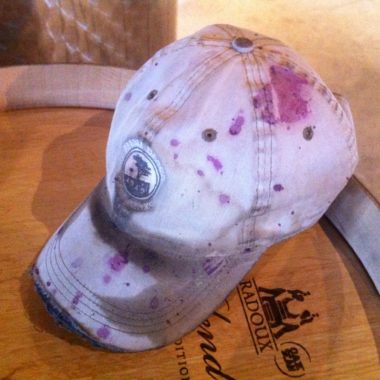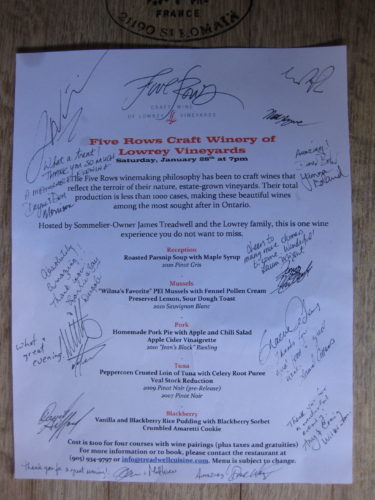As yet another memorable harvest draws to a close, I delight in sharing some of the bizarre things that have crept into my exhausted mind over the last couple of months. It can be a grind at times, so pulling back the curtain a bit to reveal some of the lighter moments keeps me from taking it too seriously.
While conducting a final cull of rotten berries in our original planting of Pinot Noir early in September, I found myself uttering a few choice words at these cursedly tight clusters. It culminated in a rather aggressive flick attempt with my clippers to remove a rotten berry which, in turn, produced a wild spray of acidic juice directly into my face. This moment surely sums up the give and take relationship I have with these old vines, a relationship that began to take human form.
In fact, as I wiped the burning juice from my eyes, I surmised that these five rows are like the brother I never had. We are of similar age (although I am slightly older and wiser) and we have grown up on this farm together. We compete for my parents’ attention and can get very jealous of one another, yet our individual success is completely reliant upon the other. There are epic fights, but if anyone else is critical of my Pinot vines – I’ll kick their ass. We always have each other’s back because our tangled roots run ever deep in this soil.
While pacing around the barn on a weekend that saw a forecasted 15-20mm of rain balloon to a record 86mm, I realized just how tied to the weather my mood becomes during harvest. A rainy day may as well be the end of the world in my mind. Everything is planned around them, you can’t do anything during them, and nothing good ever comes as a result of them! I become consumed with regrets: Should we have picked earlier? Did I just ruin everything good I’ve done all year by letting them hang through a hail storm? How long will this field take to dry out?
Conversely, when the sun is shining – so am I. Strutting around the farm with a wide smile and time enough for everyone, I ooze positivity. It doesn’t get any better than walking through a block of ripe, clean grapes knowing you could pick them whenever you like. I taste each berry thoroughly and make a mental note of which vines and rows will make the cut this year. As you are probably aware, this happens with extreme rarity.
More often I’m faced with a scenario akin to the following: We finish pressing Pinot Noir and I finally have a chance to get out and take a good look at the Riesling. I walk over to the block and think to myself, “Ahh, the patience of Riesling…I can leave them to the end every year and they never let me down!”
It only takes few minutes to realize I’ve waited WAY to long to thin out these vines and now I’ve got a tinderbox of Botrytis on my hands. I flash back to those times during the year when I’d walk by the Riesling and pay them but a fleeting glance before moving on to more pressing concerns. Perhaps I knew deep down that the day of reckoning would come soon enough.
It is reminiscent of a scene from Pee-Wee’s Big Adventure where Pee-Wee is faced with saving all the pets from a burning pet store. Of course he saves the cute puppies and bunnies first, each time running past the terrarium of snakes with a look of terror that I know all too well. The scene ends with a hysterical Pee-Wee running out of the store with fistfuls of snakes and collapsing to the ground.
Before I know it I’m covered in a sticky lather of sweat and juice, hurriedly extricating botrytized clusters of Riesling with my bare hands and high-stepping to the end of the row to hurl them into the headlands…
Crazy, you say?
I know you are, but what am I. (P.W. Herman 1985)


